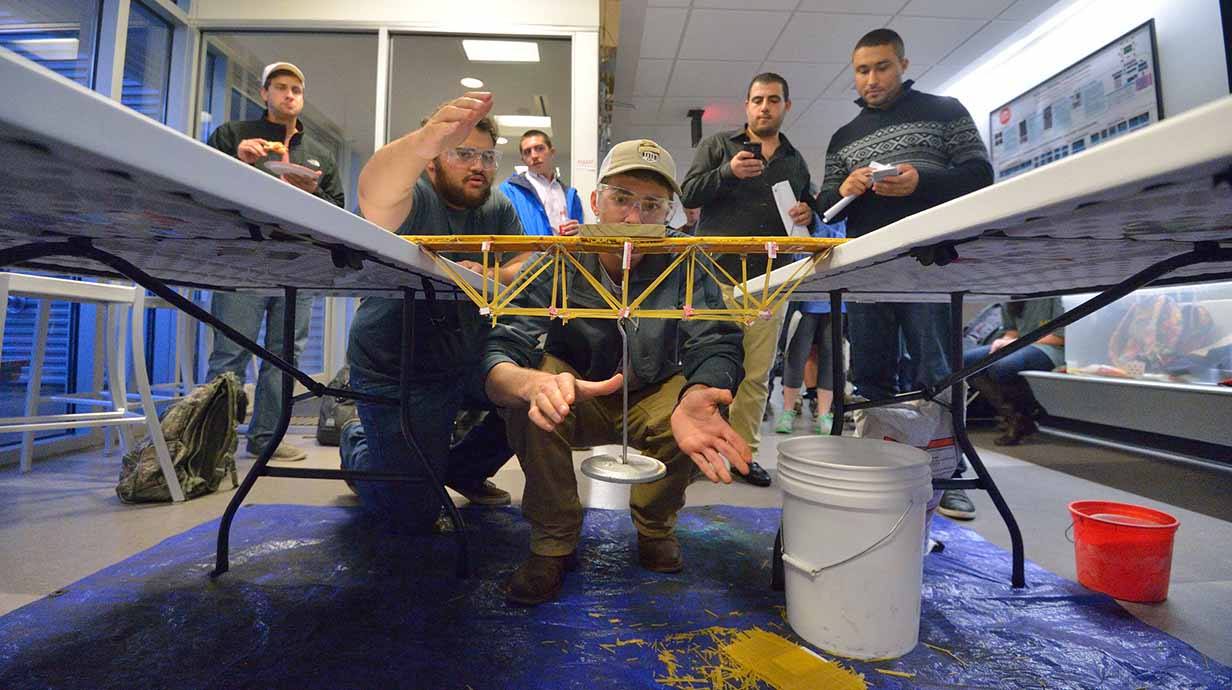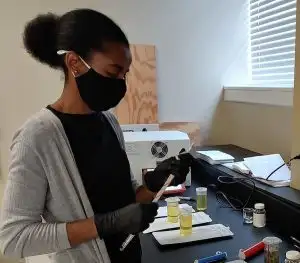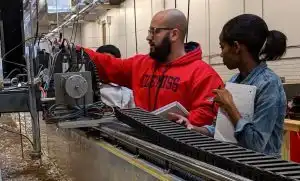Research in Civil Engineering
Research opportunities shaping your academic journey

Our research looks at ways to improve society – infrastructure, innovative materials, transportation, water pollution and water resources
Civil engineering faculty at the University of Mississippi collaborate with government agencies and other universities to undertake wide-ranging research. Take a look at the many ways we're driving innovation with our research projects below.
Reach out to faculty members directly using the contact information below to inquire about current openings in their labs.
Current Research Projects
We analyze how buildings and bridges can better respond to wear-and-tear and natural disasters. And, we are using machine learning to predict how structures behave in response to a variety of human and environmental influences.
In recent research, for example, we have been utilizing innovative tools to help predict and prioritize maintenance requirements for concrete highways and bridges in Mississippi. And, we’ve been investigating how post-earthquake fire scenarios should be considered in building design.
Faculty:
- Jacob Najjar – artificial neural networking
- Hakan Yasarer – geotechnical engineering; material testing; artificial neural networking

We employ nanoengineering and 3D-printing techniques to develop and enhance construction materials such as concrete and asphalt.
As an example, we are exploring the strength potential of graphene, a form of carbon that could be used in everything from roads and bridges to electronics to medicine. We’ve also worked on a NASA program to design a 3D-printed building block for possible use on Mars expeditions.
Faculty:
- Ahmed Al-Ostaz – graphene; nano and micro materials; multiscale modeling
- Hunain Alkhateb – cement binders for 3D printing applications; nano-based composites
We are looking into ways of making traffic safer and more efficient. We use big data analysis and simulation modeling to determine ways to improve traffic operation.
We recently undertook research into how to reduce accidents that could result from roadside barriers. Another project looked into alternatives for traffic intersections.
- Amir Molan – highway, pedestrian and bicycle safety; intersection alternatives

We are identifying issues and looking for solutions related to water pollution from natural and manmade causes.
As one example, we are monitoring the presence of the COVID-19 virus in the university’s wastewater systems. And in another endeavour, we are screening water for lead in schools and child care facilities in the Mississippi Delta.
- Matteo D’Alessio – transport of pharmaceuticals and other products; wastewater
- Cris Surbeck – lead in drinking water; soil and groundwater remediation
- Mohammad Al-Hamdan – geospatial technologies for pollution modeling

We are working to understand the impacts of land use and climate change on water quantity and quality, public health and aquatic ecosystems. This provides insight into ways to mitigate floods, reduce stormwater damage and better maintain waterways.
We have developed software, for example, that quickly calculates the spread of flood water in case of dam or levee breaches.
- Mohammad Al-Hamdan – remote sensing and geographic information systems
- Cris Surbeck – stormwater management
